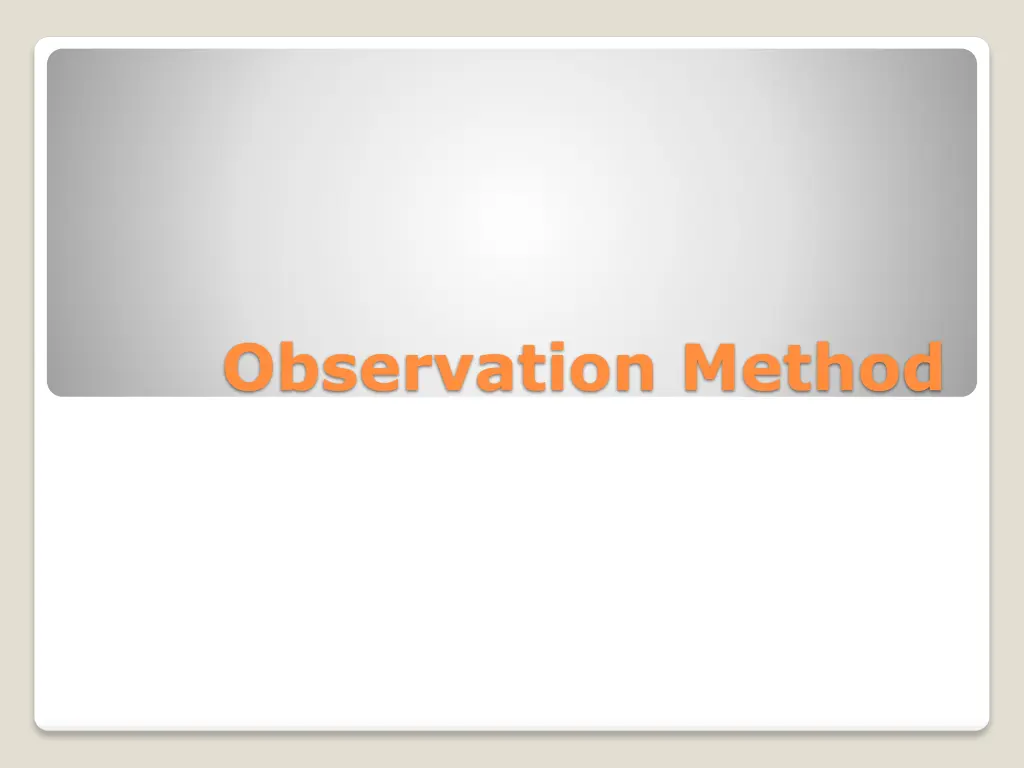
Understanding Observation Methods in Research
Explore the concept of observation methods in research, where the mental processes of individuals are observed through their behavior. Learn about the significance, types, and characteristics of observation as a systematic and objective research tool.
Download Presentation

Please find below an Image/Link to download the presentation.
The content on the website is provided AS IS for your information and personal use only. It may not be sold, licensed, or shared on other websites without obtaining consent from the author. If you encounter any issues during the download, it is possible that the publisher has removed the file from their server.
You are allowed to download the files provided on this website for personal or commercial use, subject to the condition that they are used lawfully. All files are the property of their respective owners.
The content on the website is provided AS IS for your information and personal use only. It may not be sold, licensed, or shared on other websites without obtaining consent from the author.
E N D
Presentation Transcript
Introduction It literally means looking outside oneself where we observe the mental process of others. The overt behaviour observed may be reflected in a form of bodily changes, gestures, facial appearances, speech etc.
In observation, we draw inferences about the mental processes of other persons by observing their behaviour. With the help of this method, we can judge and know about human conduct, mental process and personality. In fact, it is an indirect approach for the study of the mental process.
Observation seeks to ascertain what people think and do by watching them in action as they express themselves in various situations and activities. It is used to evaluate the overt behaviour of individuals.
Observation is one of the important and significant methods for collecting data in almost all types of research studies. This is one of the oldest research methods which were used by astronomers, biologists and physicists in the olden days. Observation means looking outside oneself. It may be described as direct observation of a phenomenon under investigation. It refers to inspection of the overt behaviour of a person in an appropriate situation.
Types of Observation Observation can of many types:- Direct Observation. Indirect Observation. Participant Observation. Non Participant Observation. Controlled Observation. Uncontrolled Observation.
Characteristics of Observation There are certain characteristics of observation methods. These are as follows- Observation is a systematic method. It is not haphazard or unplanned. The interval time, the area or situation, techniques used for observation, length of observation periods etc. are carefully planned in this method. Observation is specific in nature. It is not just looking around for general aspects of human behaviour.
Observation is quantitative and it can be interpreted in objective manner. P.V. Young remarks that observation is a systematic and deliberate study through eye. An observer gathers the data which he has been in his own eyes. Observation must have some definite aims and objectives. It should be clearly defined before the actual observation process is begins. Observation result can be checked and verified.
